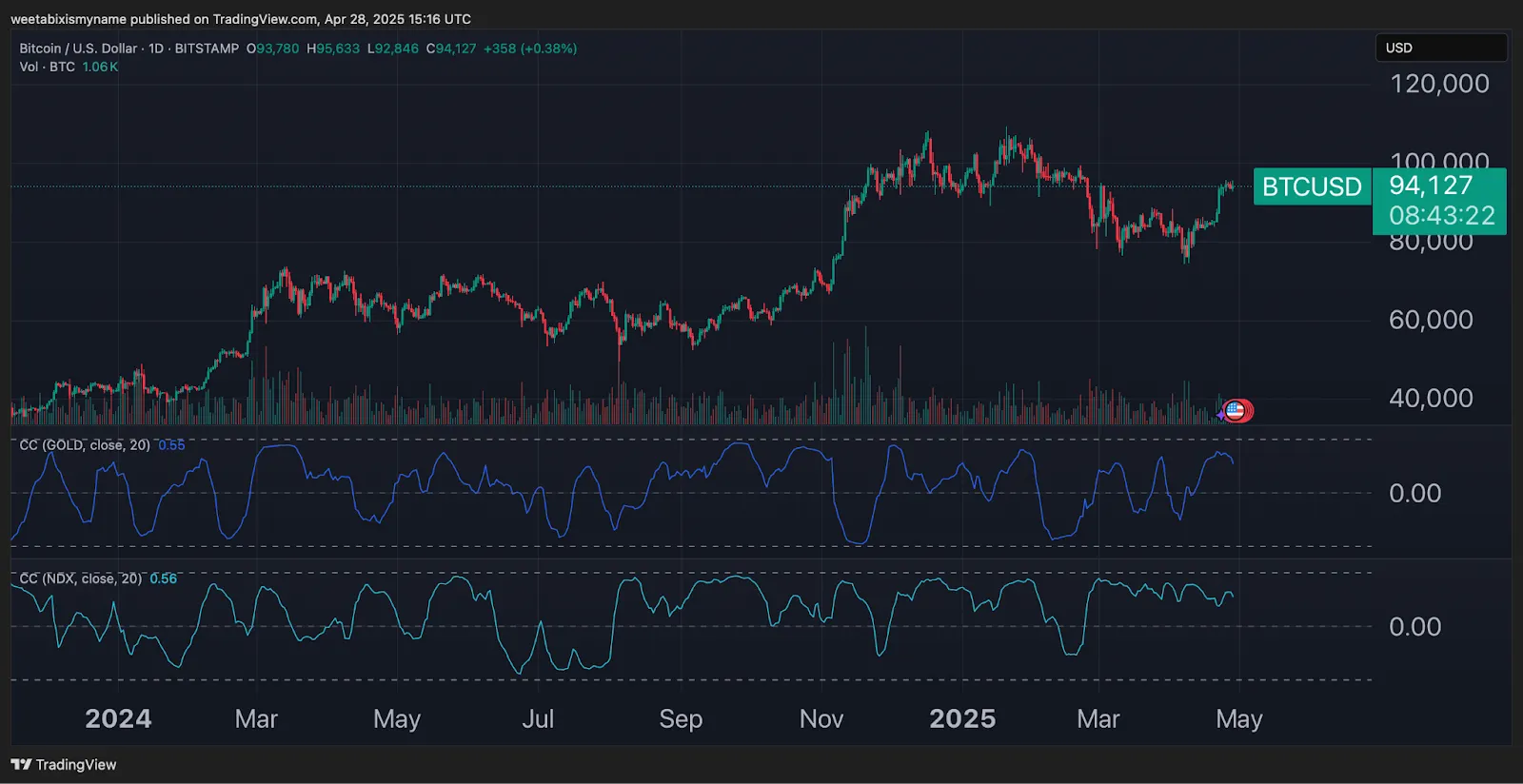
Bitcoin’s total exchange supply has dropped to its lowest level for seven years after falling to 2,488,00 BTC on Saturday.
CryptoQuant’s data shows that the exchange reserves are currently at 2,492 million BTC, up by about 40,000 BTC on the weekend. However, the level is still the lowest it has been since October 2018.
The Bitcoin price is currently at $95,400. After the Trump Administration expressed willingness to negotiate a tariff deal with China, the cryptocurrency now looks to continue the gains made last week.
According to the CoinShares Digital Asset Funds Flows Report, Bitcoin fund inflows reached $3.2 billion in the week ending April 28.
The report from last week showed a monthly outflow of 894 million dollars.
Combining declining balances of exchange with increasing inflows of funds points towards a new phase of accumulation. Retail appears to have played a larger role in the recent gains than previous weeks.
The exchange whale ratio has dropped from 0,512 on April 17, to 0,36 on April 27, a clear indication of this.
This measure is a ratio of the top 10 exchange inflows compared to total inflows, with a maximum score of 1 indicating that the top 10 inflows—meaning whales—account for the entire market on exchanges.
The current ratio indicates that the retail sector is contributing more to the current trading wave, and this in turn implies a higher demand for Bitcoin.
This demand is likely due to a variety of factors. Some traders and analysts have pointed out that Bitcoin decoupled from tech stocks and has followed gold more closely in recent weeks.

But Bitcoin’s actual correlation with gold since the beginning of the year has see-sawed considerably, taking in 0.74 at the end of January, –0.87 in early February, 0.54 in early March, –0.36 in mid-March, 0.62 at the end of March, –0.50 in early April, and 0.55 as of this writing.
The conclusion that the aforementioned is true would be premature. Bitcoin Even if the recent performances against a backdrop of economic insecurity have played into this narrative, genuinely begins to act like digital gold.
The Bitcoin dominance Index, which measures the market capitalization for BTC in relation to that of the total crypto-market, is one data point that supports the thesis of safe haven.
CoinMarketCap reports that the percentage has gone up from 54% to 63.4% from December 1st. This could reflect traders shifting from highly volatile alts into BTC.
The Bitcoin volatility index fluctuated within a smaller band in the last couple of years. This means that there were fewer large spikes than would have occurred before 2023.
The volatility of the Index has not decreased in recent weeks. On April 7, the second highest reading in 2025 was recorded, rising from 3.4 up to 6.71, as the coin fell to its lowest level in five months, $74,773.
Stacy Elliott edited this article.


